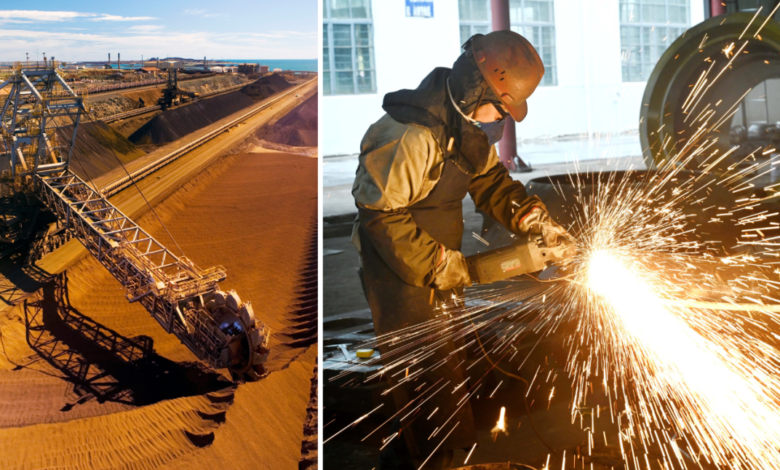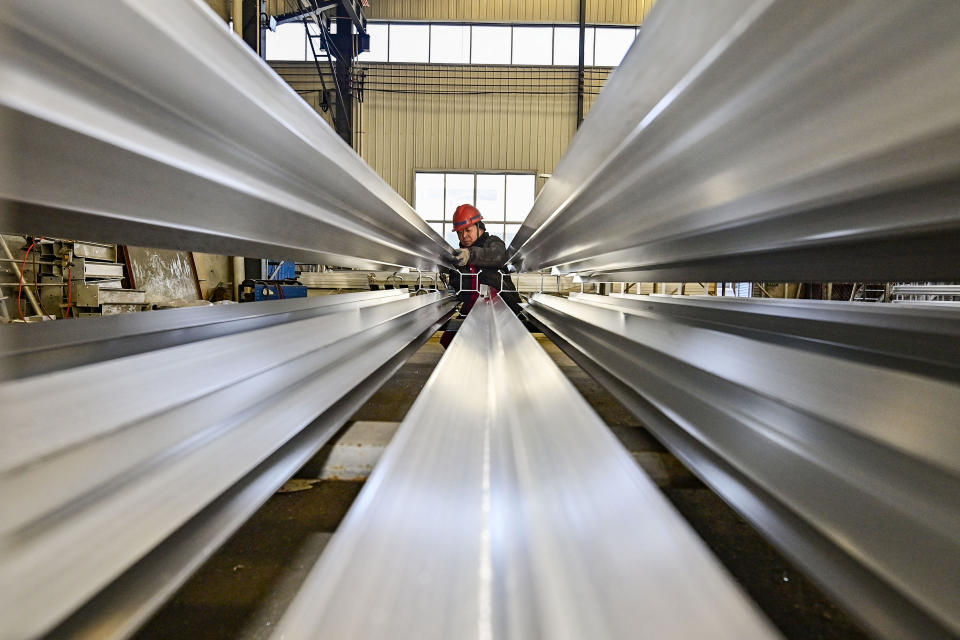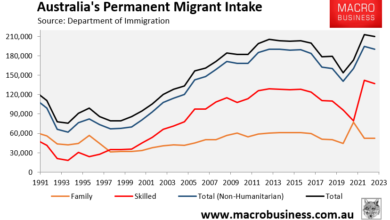China’s iron ore disaster delivers $40b blow for Aussie economy

The price of Australia’s dominant export earner, iron ore, has fallen by a chunky 25 per cent since its early 2024 peak of US$144 a tonne to now be less than US$110 a tonne.
This is a big move and, if sustained, adds to the downside momentum for the Australian economy in 2024.
In 2023, Australia exported 895 million tonnes of iron ore, valued at more than $124 billion. Around 80 per cent of the iron ore exports went to China. The dominance of iron ore in Australia’s exports, and the concentration China has as the main buyer, is making the price fall somewhat worrying.


Do you have a story to tell? Contact yahoo.finance.au@yahooinc.com
The key reason behind the falling price is the slowing in the Chinese economy. Iron ore is used to make steel, which in turn is a vital material for construction and parts of manufacturing.
As China’s economy slows, new construction is scaled back, which feeds through into lower demand for Australia’s iron ore.
Also by the Kouk:
At this stage, the price fall is not yet a headline problem – iron ore miners are still profitable with a price above US$50 a tonne. That said, all businesses, especially miners, love to get a high price for their output. The higher the better.
But the drop in the iron ore price is dimming one of the bright spots for the Australian economy, and the share prices of the big iron ore producers – Fortescue, BHP and Rio Tinto – are down by around 15 to 20 per cent in a few months.
Get the latest Yahoo Finance news – follow us on Facebook, LinkedIn and Instagram.


When commodity prices are massively above the cost of production, the so-called windfall profits feed into their share price, the dividends they pay shareholders, bottom-line profits, and the tax they pay to the government. All of these add up to a solid positive contribution to the economy.
When prices fall, those windfall gains are eroded, creating downside to the economy. This erosion of national income, via a lower price for iron ore, will be notable if it is sustained or if there are further price falls.
Each US$10-a-tonne change in the iron ore price on around 900 million tonnes of annual exports totals US$9 billion. In Australian dollars, that’s around $13.5 billion per annum. The fact the price is down by around US$30 a tonne from its recent peak is a trimming of around $40 billion per annum from export receipts. It could be more if the tonnages of iron ore exports are scaled back as the economy slows.
Where to for China?
Economic growth in China was just 3 per cent in 2022, thanks to the impact of the COVID pandemic, which shut down many sectors for extended periods of time. It also meant the major structural changes in the economy – towards a greater reliance on services and urbanisation – stalled.
China registered a moderate recovery in 2023 – by Chinese standards – with GDP growth of 5.3 per cent, and the outlook for 2024 is for growth easing back to around 4.3 per cent.
These GDP growth rates are well below the averages in the decade before the pandemic of 6 to 8 per cent per annum.
Unfavourable demographics, including a falling population, are presenting more structural challenges to sustain an expansion over the medium term. This relative weakness has seen inflation fall sharply to around zero per cent in late 2023 and early 2024.
The Chinese economic policymakers have reacted to the slow growth/disinflation risks by easing policy – including easing monetary policy and making the yuan exchange rate competitive.
It is to be hoped these policy stimulus measures kick in to give a boost to the Chinese economy. If they do, it will be of great benefit to the Australian economy. Export volumes of the commodities we export to China will be supported, as will the price paid, including for iron ore.
While the US remains a dominant economy for the world, China is arguably more relevant for Australia.
In the near term, the fall in the iron ore price is a negative influence but if China can recover later in 2024 and 2025, the Australian economy will get a boost.





